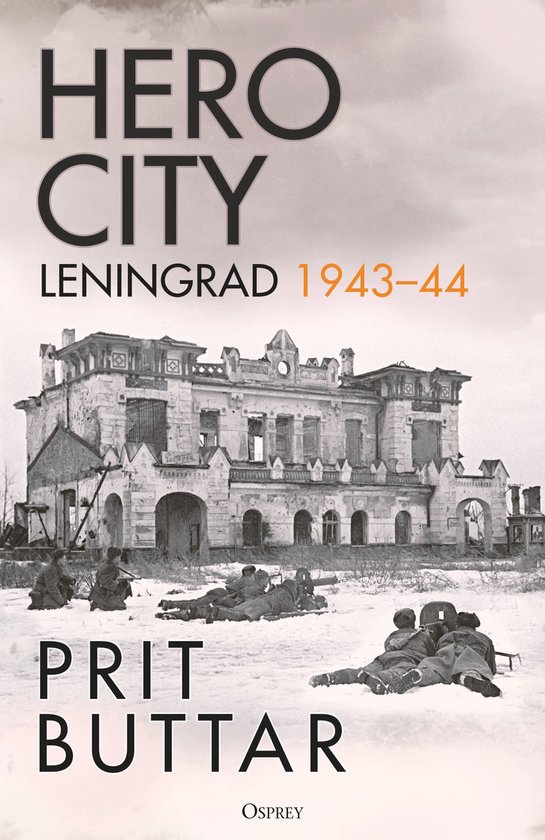| Title: | Hero City - Leningrad 1943-44 |
| Writer: | Buttar, Prit |
| Published: | Osprey |
| Published in: | 2024 |
| Pages: | 464 |
| Language: | English |
| ISBN: | 9781472856616 |
| Description: | The nearly nine hundred-day-long German siege of Leningrad, alongside the battles of Stalingrad and Moscow, is part of the legendary major battles on the Eastern Front that still capture the imagination and have been extensively documented. British military historian Prit Buttar adds a new study to the vast amount of publications – spanning two volumes. This book describes the second phase of the struggle for Leningrad during the years 1943 and 1944, while last year the first volume – also discussed here – titled 'To Besiege a City', was published. In that volume, Buttar covers the German advance towards Leningrad from June 22, 1941, and the first phase of the siege up until the end of 1942. One might ask what these two new studies by Buttar contribute to the already extensive historiography and what new insights he presents. Much of what Buttar describes is likely already familiar to the reasonably informed reader. For instance, the years-long siege of Leningrad was a direct result of Adolf Hitler's cruel order not to capture this cradle of Soviet communism but to seal it off and bombard it so that the millions of inhabitants would perish. In this, Hitler largely succeeded – an estimated one million civilians died from malnutrition and cold. Many interested readers may also know that the struggle around Leningrad largely resembled a rather static trench warfare, which took place not only in the immediate vicinity of the city but extended over a much larger area, primarily a difficult-to-navigate swampy region filled with birch forests and mosquitoes, where tanks had little advantage, especially during the muddy periods in spring and autumn. Prit Buttar is an experienced military historian with an impressive number of military studies to his name concerning the battles on the Eastern Front (also during World War I). The strength of Buttar's work lies primarily in his engaging and clear narrative style. Military-historical studies often turn out to be rather dull reconstructions filled with too many unit names, place names, and technical details, causing readers to lose sight of the bigger picture. However, Buttar makes effective use of individual soldiers' testimonies, managing to make the titanic struggle around Leningrad palpable. His vivid reconstruction is also well-balanced; Buttar gives voice not only to Germans but also to Russians, highlighting the battle for Leningrad from both the perspectives of the Wehrmacht and the Red Army. It is impressive that Buttar has been able to access Russian literature and archives for this study. The struggle for Leningrad was logically closely linked to developments elsewhere on the Eastern Front. This was also true for the fate of the German 16th and 18th Armies (and ultimately the entire Army Group North). By the end of 1941, after the stagnation of Operation Barbarossa, the battle for Leningrad took on the character of a static trench war. For a long time, the Wehrmacht appeared capable of conducting that battle skillfully. Russian offensives were repeatedly repelled, the Red Army suffered consistently higher losses than the Wehrmacht, while German units frequently carried out carefully planned and executed withdrawals to pre-fortified new defensive lines. Seemingly, the situation did not change fundamentally in 1942 and 1943. In practice, however, the Wehrmacht was slowly but steadily bleeding out. Indeed, the German forces suffered significantly fewer losses than the Red Army, but Germany was – unlike the Soviet Union – not able to adequately replace its losses. As a result, the German lines became increasingly thinly staffed, and injured or killed veterans had to be replaced by inexperienced reservists of lesser quality. Buttar rightly adds that the increasing dominance of the Red Army was not only a matter of quantity – there was also an improvement in the quality of weaponry and, above all, in the tactical leadership of the officer corps, albeit with many trials and errors. By the end of January 1944, the Russians definitively broke through the German lines, and the Wehrmacht's retreat became increasingly chaotic. By October '44, Army Group North would even be encircled in the Latvian coastal region of Courland, where it would hold out until the German surrender in May 1945. Prit Buttar is a gifted storyteller who has the ability to vividly reconstruct the brutal fighting on the Eastern Front. |
| Rating: |     Very good Very good |
Information
- Article by:
- Jan-Jaap van den Berg
- Published on:
- 27-10-2024
- Last edit on:
- 05-11-2024
- Feedback?
- Send it!



